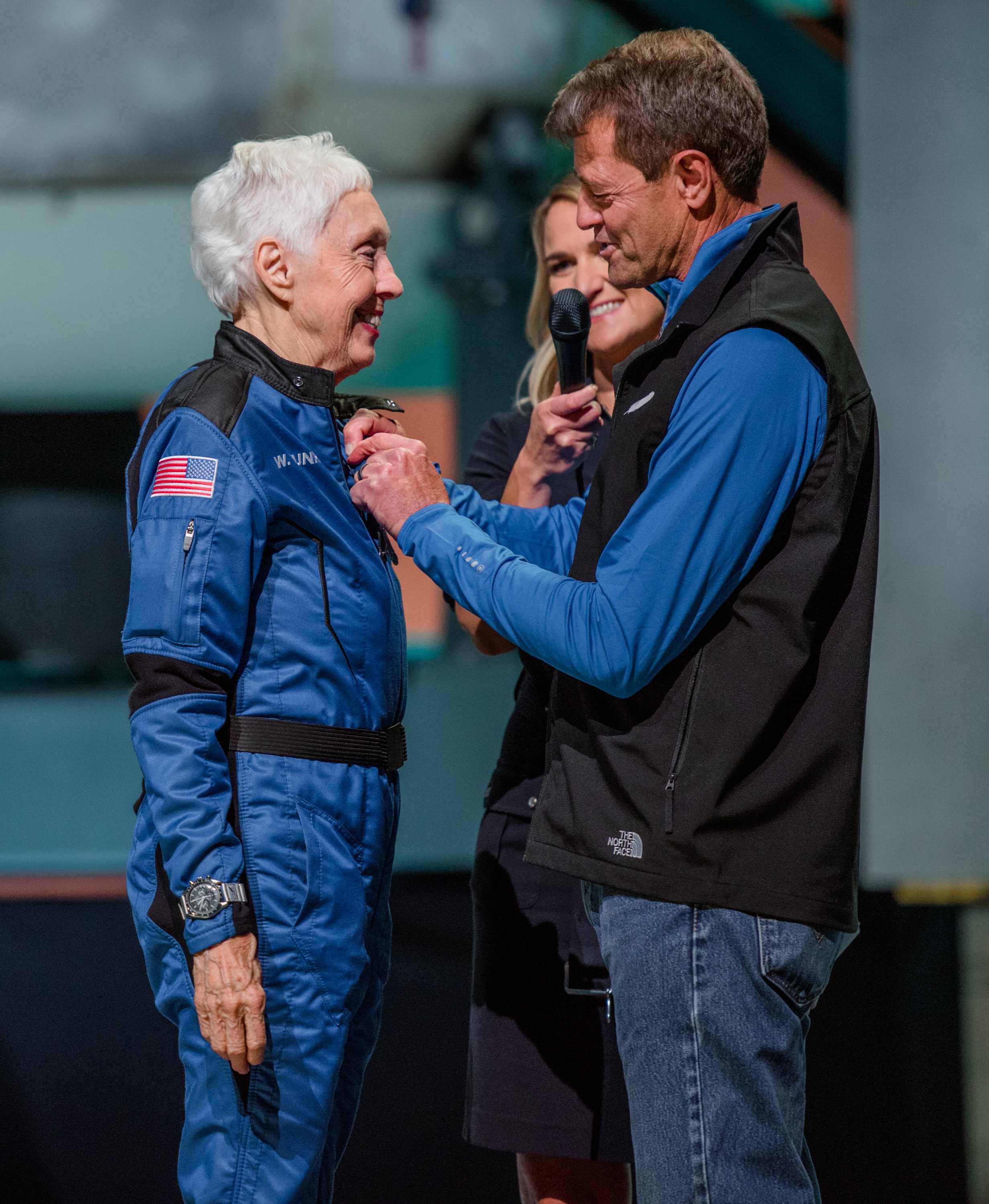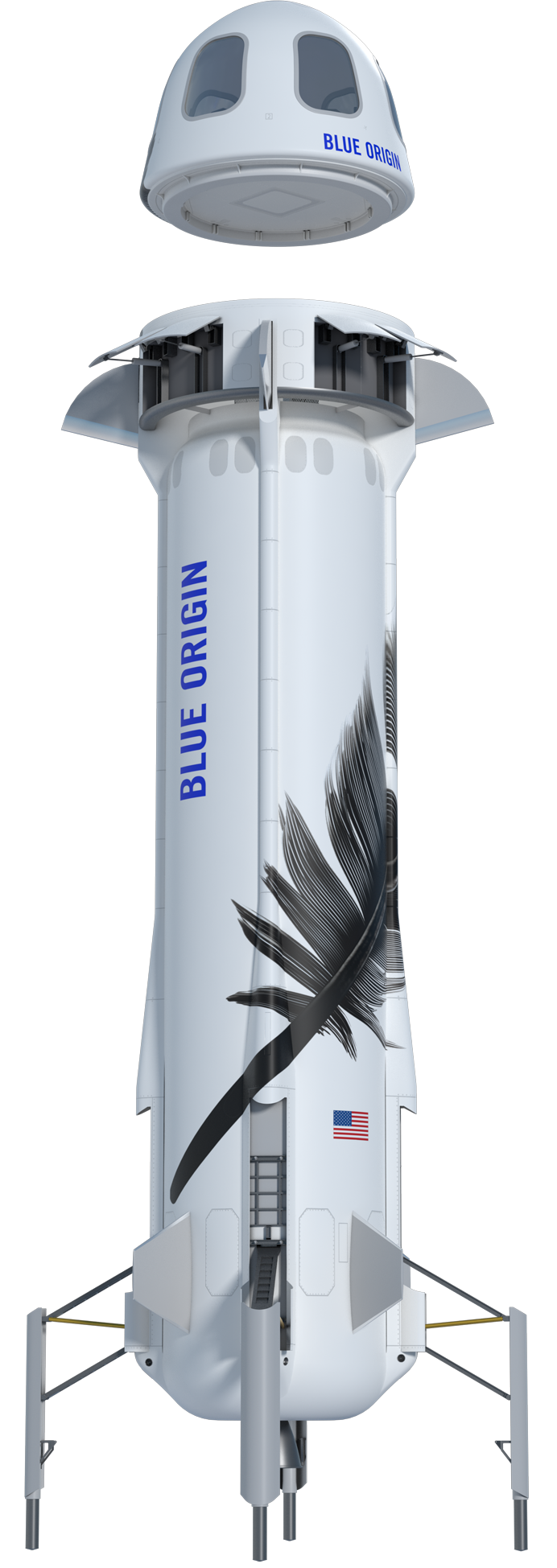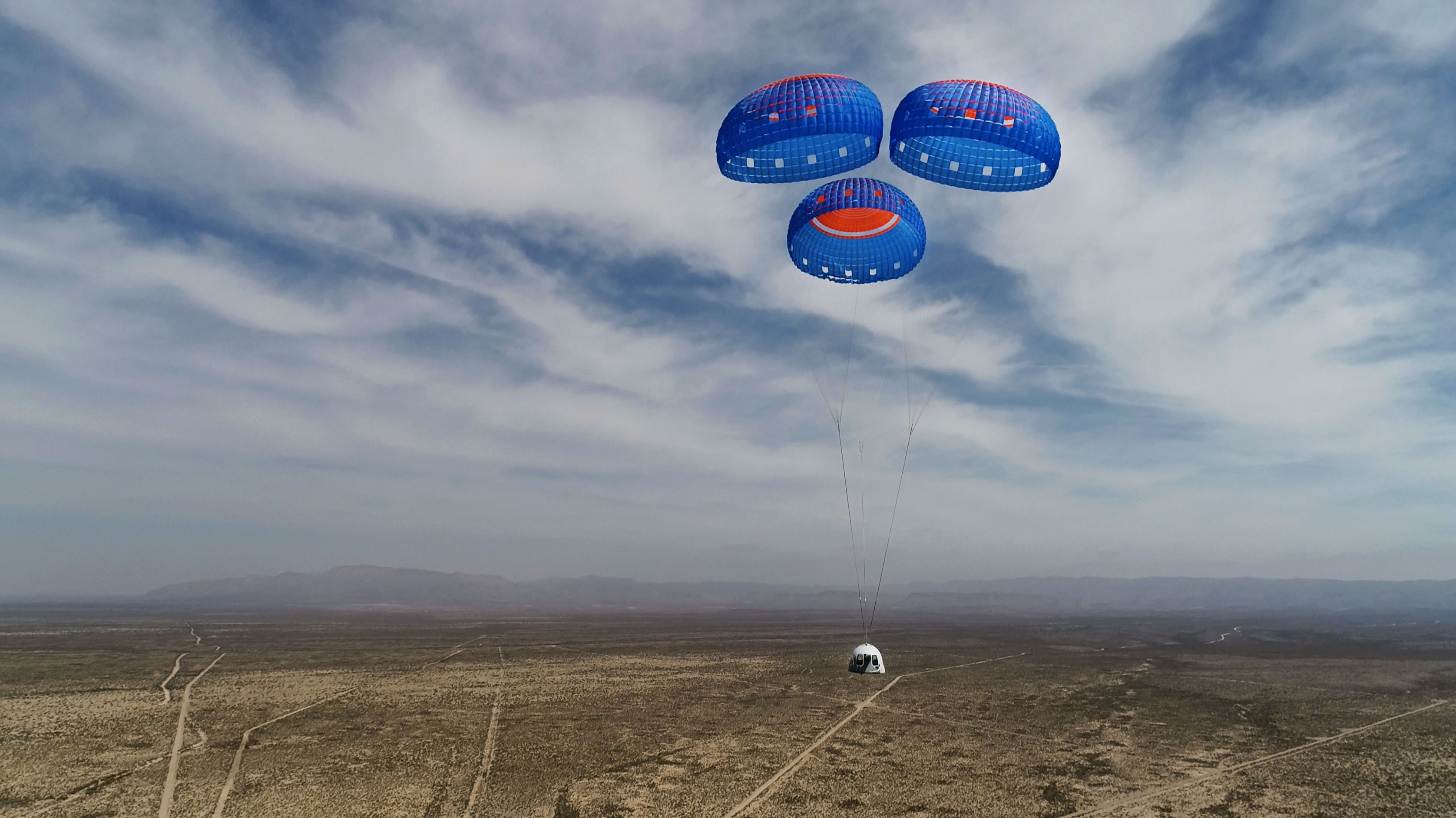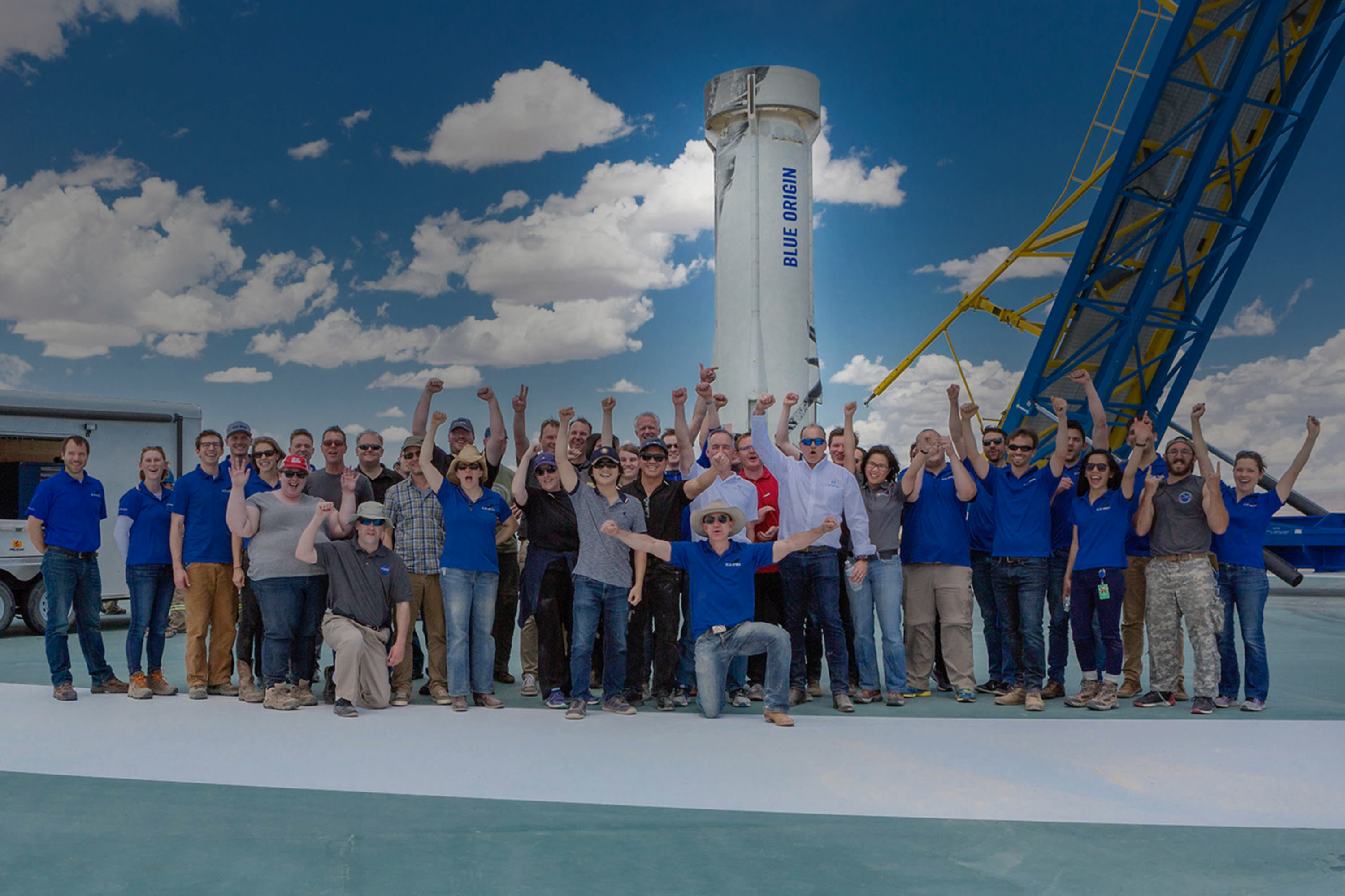Suborbital Spaceflight
New Shepard
Our reusable launch vehicle is taking payloads - and soon you - to space.

EXPERIENCE NEW SHEPARD
Learn more about becoming an astronaut by flying on New Shepard.

LATEST FLIGHT
NS-22
Meet New Shepard
Named after Mercury astronaut Alan Shepard, the first American to go to space, New Shepard is our reusable suborbital rocket system designed to take astronauts and research payloads past the Kármán line – the internationally recognized boundary of space. Whether you are an astronaut flying with Blue Origin or sending a payload to space, your 11-minute flight on New Shepard will be the experience of a lifetime.

-
Crew Capsule
Pressurized crew capsule environmentally controlled for comfort with room for six and the largest windows to have flown in space.
-
Ring & Wedge Fins
Aerodynamically designed to stabilize the booster and reduce fuel use on its flight back to Earth.
-
Drag Brakes
Deploy from the ring fin to reduce the booster's speed by half on its descent from space.
-
Engine
The BE-3 (Blue Engine 3) propels the rocket to space and restarts for a controlled pinpoint landing on the pad. The uniquely throttleable engine slows the booster down to just 8 km/h (5 mph) for landing.
-
Aft Fins
Stabilize the vehicle during ascent, steer it back to the landing pad on descent, and guide the rocket through airspeeds of up to Mach 4.
-
Landing Gear
All rockets take off, not all rockets land. As a fully reusable rocket, the New Shepard booster uses landing gear that deploys for touchdown.
The Capsule
With room for six astronauts, the spacious and pressurized crew capsule is environmentally-controlled for comfort and every astronaut gets their own window seat. The vehicle is fully autonomous. There are no pilots.

-
Largest windows in space
-
Reclined seats with 5-point harness
-
Crew escape system
-
Handholds for ease of movement during zero-g
-
Screen for in-flight updates and indicators

GRADATIM FEROCITER
Safety, Blue Origin's Top Mission
Blue Origin has been flight testing New Shepard and its redundant safety systems since 2012. The program has had 22 successful consecutive missions including three successful escape tests, showing the crew escape system can activate safely in any phase of flight.
ENVIRONMENTAL MEASURES
Protecting Our Planet
Building a road to space starts with reusable vehicles and New Shepard is the first step in realizing that mission. The entire New Shepard system has been designed for operational reusability and minimal maintenance between flights from day one to decrease the cost of access to space and reduce waste. Nearly 99% of New Shepard’s dry mass is reused, including the booster, capsule, ring fin, engine, landing gear, and parachutes. New Shepard’s BE-3PM engine is fueled by highly efficient and clean liquid oxygen and hydrogen. During flight, the only byproduct of New Shepard’s engine combustion is water vapor with no carbon emissions.
RESEARCH AND DEVELOPMENT
Human-Tended Research Opportunities
New Shepard payload flights have supported a wide range of research, education, and technology development. Now, with astronauts on board, we can add skilled hands, extending the laboratory to space and training crews for real-world flight operations.

Send Something to Space with Blue
Fly Your Research and Technology
Whether you’re a school who wants your own space program for the cost of sports uniforms or a researcher using microgravity to test your technology, New Shepard is enabling low cost, frequent access to space.


